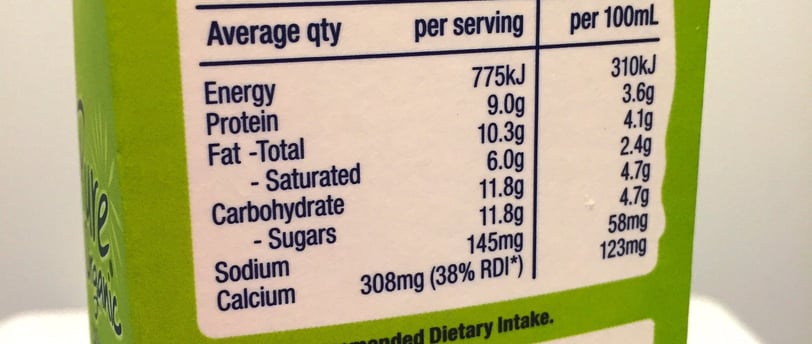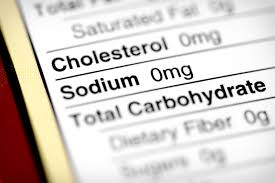How to Read a Nutrition Label
How to Read a Nutrition Label: When you’re on a journey to eat healthier, one of the first pieces of advice you often receive is, "Start reading nutrition labels." However, those tiny boxes filled with numbers and unfamiliar ingredients can be daunting at first glance.
🍋 EVERYDAY NUTRITION TIPS


When you’re on a journey to eat healthier, one of the first pieces of advice you often receive is, "Start reading nutrition labels."
However, those tiny boxes filled with numbers and unfamiliar ingredients can be daunting at first glance.
The encouraging news is that you don’t need a formal nutrition education to interpret them.
This guide will break down the components of nutrition labels in clear and straightforward terms, empowering you to read labels with confidence and make informed choices that align with your health goals.
Why Nutrition Labels Matter Nutrition labels offer a detailed insight into the nutritional content of your food.
They provide information about calories, fat, protein, sugar, fiber, and essential vitamins and minerals present in each serving.
These labels are more than just numbers; they are vital tools for recognizing hidden sugars, artificial additives, and ultra-processed ingredients that may negatively impact your health, even in products that boast “healthy” fronts.
Understanding the label can help you discern the difference between genuinely nutritious foods and those that are cleverly marketed.
Step-by-Step: How to Read a Nutrition Label Here are the essential elements to consider when reading a nutrition label, presented in a logical order for clarity:
1. Serving Size
Begin with the serving size, as all the nutritional information is based on this amount.
Example: If the label indicates a serving size of 1 cup and you consume 2 cups, you are essentially doubling all the nutritional values—calories, sugars, fats, and so forth.
Be mindful of how it relates to portion control.
2. Calories
This number tells you how much energy is contained in one serving.
It’s not necessarily the most critical figure, but it’s useful for understanding your energy intake relative to your daily needs, especially if you're monitoring your weight or energy balance.
3. Total Fat + Types of Fat
Look closely at both the total fat content and the types of fat included.
Healthy fats:
Focus on unsaturated fats derived from sources like nuts, seeds, avocados, and olive oil, which are beneficial for heart health.
Limit:
Saturated fats and avoid trans fats, which are associated with increased risks of heart disease.
4. Cholesterol & Sodium
These components are often elevated in processed or ready-to-eat meals.
Aim for low-sodium options (less than 300mg per serving) to help manage blood pressure and overall heart health.
Remember that cholesterol predominantly comes from animal products, and plant-based foods contain no cholesterol at all.
5. Total Carbohydrates
This figure includes sugars, dietary fiber, and starches. Pay particular attention to:
Dietary Fiber:
Higher fiber content is beneficial for digestive health, with a target of at least 3g per serving.
Fiber can also help you feel full longer.
Added Sugars:
Aim to minimize added sugars, which should not exceed 10% of your daily caloric intake to maintain overall health.
6. Protein
Protein is crucial for maintaining muscle mass, satiety after meals, and overall bodily function. If you follow a plant-based diet, look for foods that provide at least 5g of protein per serving in your snacks and meals.
7. Ingredients List (The Most Revealing Part)
This section reveals the true quality and integrity of the food. Ingredients are listed in descending order by weight.
A shorter ingredient list usually indicates a more natural and less processed food.
Watch for hidden sugars like high-fructose corn syrup, maltose, or dextrose, which can add unexpected calories.
Be cautious of vague terms like "natural flavors," thickeners, and chemical preservatives that suggest processing.
Red Flags to Watch For
Sugar appears among the top three ingredients.
More than 5 grams of added sugar per serving, especially in items marketed as "healthy."
Unfamiliar ingredients or lengthy chemical names that are hard to pronounce.
Health claims such as "low fat" or "natural" may mislead you about the food's overall nutritional profile.
Tips to Make It Easier
Shop the outer aisles:
Fresh produce, whole grains, and other whole foods often lack labels, which is typically a positive indicator of their nutritional value.
Compare brands:
Don’t assume the first product you select is the healthiest option—compare several brands side by side to find the best nutritional choice. - Choose whole over processed:
Foods with minimal or no packaging tend to offer greater nutritional benefits and fewer additives.
Use the "5/20 Rule":
If a nutrient’s daily value is 5% or less, it’s considered low; if it’s 20% or more, it’s considered high. This simple guideline can help you make quick decisions.
Key Takeaway
Reading a nutrition label does not have to be an overwhelming task. Start with the serving size, then focus on fiber, added sugars, sodium, and protein content. Skip the marketing hype and hone in on the factual information presented. The simpler the ingredient list and the closer the food is to its natural state, the healthier it is likely to be for you.
Conclusion:
You don't need to decipher every aspect of every label perfectly. By mastering the basics, you can make educated decisions without feeling stressed or obsessive about food choices. The more you practice reading labels, the more intuitive it will become, and before long, you'll find yourself selecting foods that truly nourish your body.
Eat & Glow ✯ Nourish from the Inside Out.


Eat&Glow
Wholesome recipes and expert wellness tips await.
Energy
contact@eatandglow.com
© 2025. All rights reserved.
